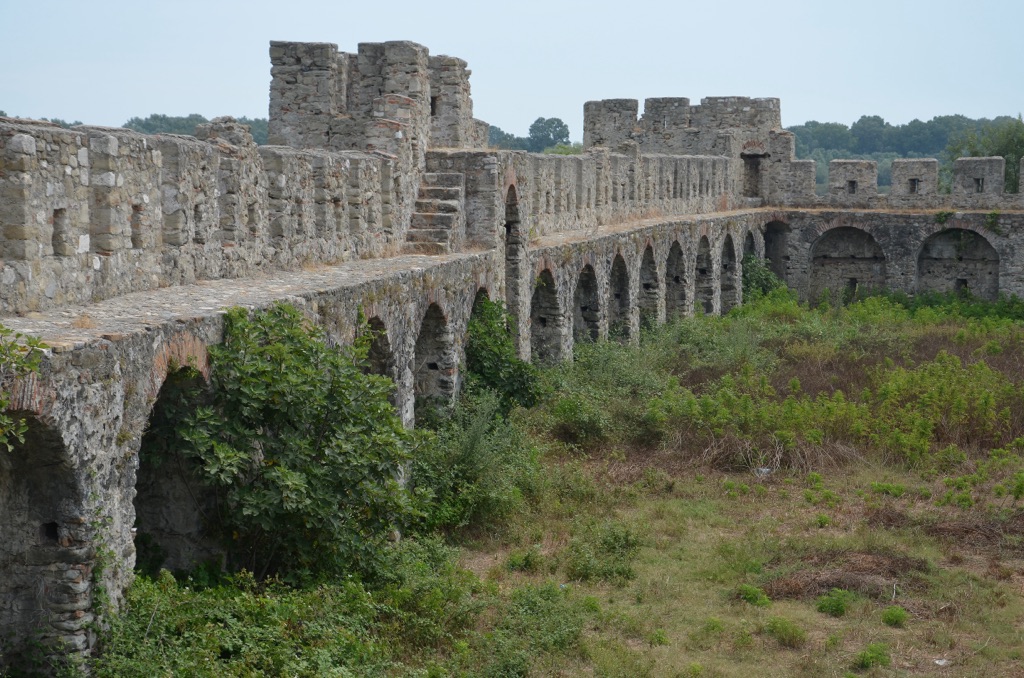The Bashtova Fortress is a historical site located in Albania. It stands as a testament to the country’s rich medieval past. The fortress, also known as the Castle of Bashtova, is a remnant of the once-powerful Ottoman Empire. It is situated near the Shkumbin River and the Adriatic Sea, which made it a strategic point for defense and trade. The structure’s exact origins are somewhat unclear, but it is believed to have been built in the 15th century. Over the centuries, it has witnessed various historical events and has undergone several transformations. Today, it is a cultural heritage site that attracts historians, archaeologists, and tourists alike.
Get your dose of History via Email
Historical Background of Bashtova Fortress
The Bashtova Fortress was likely constructed during the mid-15th century. Its strategic location was crucial for controlling the local trade routes. The fortress is thought to have been built by the Venetians or the Ottomans. However, the Ottomans were the ones who utilized it extensively. The structure served as a military garrison and a protective barrier against invasions.
Its discovery by modern historians is not well-documented, but it has been a subject of interest for many years. The fortress was built using local stone, and its design is typical of medieval military architecture. It has a rectangular shape with towers at each corner. The walls are impressively thick, designed to withstand attacks.
Throughout its history, Bashtova Fortress has seen various occupants. After the Ottomans, it was used by local feudal lords. It also played a role during the Albanian resistance against the Ottoman Empire. The fortress has been the scene of numerous historical events, shaping the region’s history.
Despite its importance, the fortress fell into disrepair over time. It was only in recent years that efforts to preserve and study the site have increased. The Albanian government has recognized its historical value and has taken steps to maintain it.
Today, Bashtova Fortress stands as a silent witness to the past. It is a popular site for those interested in medieval history and military architecture. The fortress is a symbol of the region’s resilience and historical significance.
About Bashtova Fortress
Bashtova Fortress is a medieval structure with a rectangular layout. It measures approximately 60 by 90 meters. The walls are up to 9 meters high and 1.4 meters thick. These dimensions made the fortress an imposing structure in its time.
The fortress was constructed using local limestone and mud bricks. This combination was typical for the period and region. The stone provided durability, while the mud bricks allowed for quicker construction.
Architecturally, the fortress features elements common to military structures of the era. It has four corner towers, which provided vantage points for defense. The main gate is on the southern wall and was once secured by a heavy wooden door.
Inside the fortress, there are remnants of various buildings. These include storage rooms, barracks, and possibly a mosque. The inner courtyard would have been a bustling area, with soldiers and inhabitants going about their daily tasks.
Despite its ruinous state, the fortress’s layout is still clearly visible. It offers insights into the defensive strategies of the time. The fortress’s architecture is a testament to the ingenuity of medieval builders.
Theories and Interpretations
Several theories exist about the purpose of Bashtova Fortress. Most agree that it served a military function. Its proximity to the river and sea suggests it was also a customs point for trade.
There are mysteries surrounding the fortress, particularly its exact date of construction. Some historians believe it was built by the Venetians, while others credit the Ottomans. The architectural style offers clues but no definitive answers.
Interpretations of the site have had to rely on historical records and architectural analysis. The fortress’s design is compared with other known structures from the period. This helps historians understand its role and significance.
Dating of the fortress has been carried out using various methods. These include architectural typology and historical documentation. However, there is still some debate about the precise chronology of the fortress’s construction and use.
Theories about Bashtova Fortress continue to evolve as new research is conducted. Each discovery adds to the understanding of this enigmatic structure. The fortress remains an important piece in the puzzle of Albania’s history.
At a glance
- Country: Albania
- Civilization: Ottoman Empire
- Age: 15th century AD
Conclusion and Sources
- Wikipedia – Bashtova Fortress
- Britannica – Ottoman Empire: https://www.britannica.com/place/Ottoman-Empire

